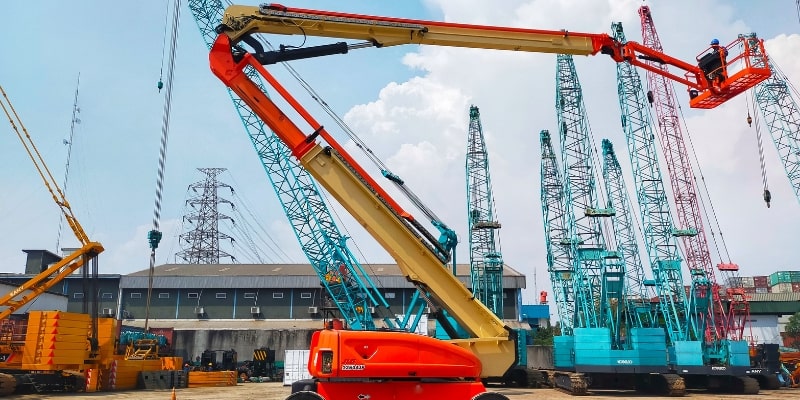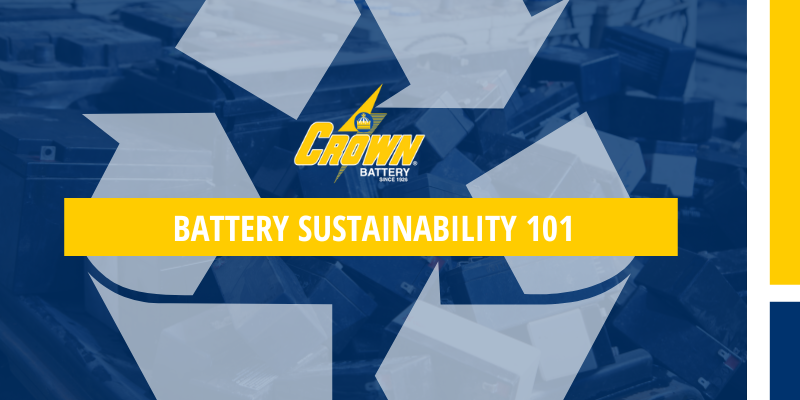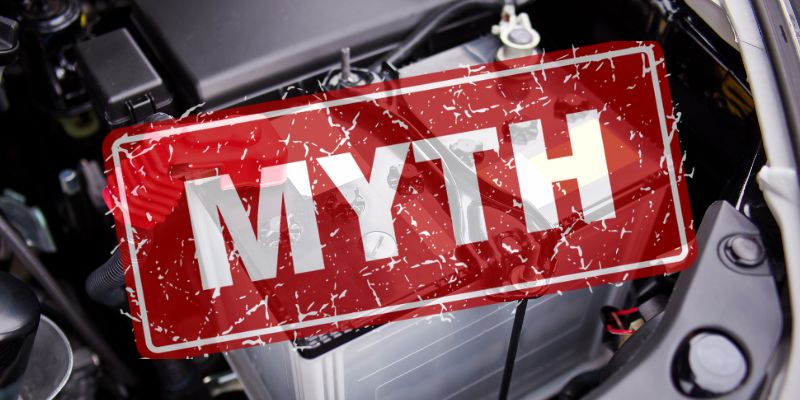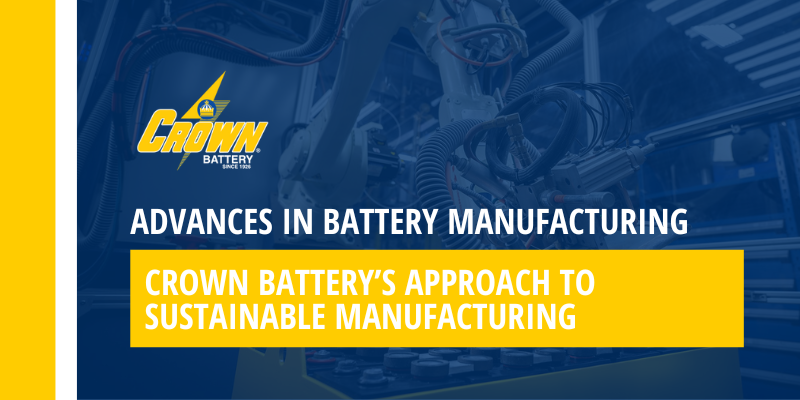Battery downtime kills profits, KPIs, and careers.
But fortunately, you can avoid downtime – and boost battery life and performance – with the proper maintenance strategy.
Even batteries advertised as "maintenance-free" still require periodic inspection – especially in extreme temperatures.
And in this article, you'll discover:
- Easy, actionable steps that save maintenance time and boost safety.
- Why even “maintenance-free” batteries need some care. (Spoiler: It can save you a lot of headaches)
- Battery Basics: A 60-second overview of common battery types and their maintenance needs.
- And more…
How Does Battery Maintenance Affect You?
Maintenance helps prevent failures and prolongs battery lifespan.
The most significant benefit is improved reliability, critical for material handling. Plus, well-maintained batteries have a longer service life, so you can avoid buying in-lease replacements or replace batteries less often – a win for your wallet. Adequately maintained batteries are less likely to leak and safer for employees and equipment.
But before we get to maintenance tips, let’s look at common battery types.
And one of the keys to battery maintenance is selecting the right batteries for your operations.
Select the Right Battery for You
There’s no one-size-fits-all battery. But this brief overview will help you compare the pros and cons:
- Flooded, 99%-Recyclable Lead-Acid Batteries: Long-lived and proven, these batteries offer excellent lifetime cost. Because they contain liquid electrolytes, lead-acid batteries require periodic maintenance that includes watering.
- Absorbed Glass Mat (AGM) Batteries: Nearly maintenance-free and sealed, AGM batteries can deliver high currents. And, like flooded lead-acid batteries, AGM models are 99% recyclable. Despite enhanced durability and convenience, AGM batteries cost only ⅓ of comparable lithium-ion and lithium-iron-phosphate batteries.
- Lithium-Ion (LI) Batteries: LI batteries also require minimal maintenance. Their higher energy density reduces weight but increases the risk of thermal runaway (overheating and possibly catching fire). They typically cost three times as much as flooded lead-acid batteries with identical storage capacity and are 5% recycled. (source: “It's time to get serious about recycling lithium-ion batteries.” https://cen.acs.org/materials/energy-storage/time-serious-recycling-lithium/97/i28).
Now that you know the basics of different battery types, let's dive into some vital maintenance tips.
Essential Battery Maintenance Tips
Inspect Regularly:
Battery maintenance begins with regular inspections:
- Always look for signs of wear and tear, leakage, and corrosion.
- If you use lead-acid batteries, consider using a hydrometer to check the specific gravity of the battery fluid. (This step helps you understand if your battery is undercharged, overcharged, or just right.)
Store Batteries Correctly for longevity:
- Always store batteries in a clean, dry, and cool environment.
- Avoid heat sources or direct sunlight where possible.
Reduce Corrosion the Easy Way:
- Use Type 316 stainless steel for bolts, washers, and nuts. Stainless steel provides excellent resistance against corrosion.
- Coat terminals, nuts, wire lugs, and bolts with a non-hardening sealant. This layer acts as a barrier, protecting against the elements.
- Cover terminal lugs and exposed wires with rubber tape or another approved lining. This extra layer of protection helps reduce the chance of electrical shorts and shock hazards.
Proper Safety Measures:
Taking safety precautions during battery maintenance isn't just about compliance – it can prevent accidents and injuries.
Here are vital tips to remember:
- Always use personal protective equipment, such as safety goggles and gloves.
- Remove all jewelry, watches, and electronics.
- Use insulated tools to prevent dangerous, accidental short circuits.
- Work in a well-ventilated area to avoid the build-up of harmful gases.
- Follow the manufacturer's safety instructions.
- Training and User Awareness: Ensure everyone who uses or maintains batteries knows how to do so correctly and safely.
Clean Regularly:
Clean batteries run more efficiently and last longer. Here are the specific cleaning steps you can take:
- Use a brush and a baking soda and water solution to remove corrosion from the battery terminals.
- Clean the battery casing with a damp cloth. If you see any acid leaks, neutralize them with baking soda.
- Check for damaged seals or cracked casing. If found, replace the battery immediately.
Make Training Easier:
- Always check the user manual: Different batteries have different maintenance needs.
- Turn maintenance manuals into checklists that employees follow and sign off on.
- Store quality maintenance tools and personal protective equipment nearby.
- Help users schedule battery maintenance reminders.
- Know the signs of a failing battery: Early detection can prevent further damage.
- Learn how to handle emergencies: Know how to use a fire extinguisher and handle acid leaks.
What’s Next?
With the tips you’ve learned here, you’re ready for smoother operations, reduced costs, and improved safety.
And if you want to learn more about improving safety and efficiency, don’t miss our no-cost "Safety First" guide. This objective, product-agnostic report includes easy-to-follow instructions and strategies for safe and simple maintenance.











